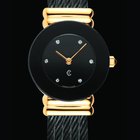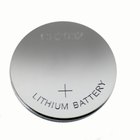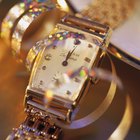The Citizen Eco-Drive is a series of watches that use alternative power sources to charge the watch's battery. Because the watches are charged by a variety of alternate power sources, the batteries do not need to be replaced. Because of this, many people consider Citizen Eco-Drive watches to be better for the environment.
Solar Eco-Drive
All current model Citizen Eco-Drive watches use light to generate power. Light passes through the crystal and is focused on a specially designed ceramic watch face. The watch face passes the light through to a solar cell where the light is converted in to electrical power and stored in special titanium lithium-ion battery. This type of battery doesn't suffer from degradation of the batter by repeated charge and discharge cycles. According to Citizen, the battery will still maintain 80 percent of a charge after 20 years of continuous use. Battery life from a fully charged battery varies by model. Some models will run normally for a month, others will run normally for years. Some Eco-Drive watches go in to a hibernation mode when stored in the dark for a long period of time. In hibernation mode, the watch's hands stop moving, but the internal quartz timepiece continues to keep track of time. When the watch is exposed to light again, the watch "wakes up" and moves the hands to the correct position.
Eco-Drive Thermo Watches
Earlier Eco-Drive models used different technologies to charge the battery. The Citizen Eco-Drive Thermo watches made power through the difference in temperature between the wearer's wrist and the ambient air. This difference in temperature would create power via the Seebeck effect and would charge the battery. Problems occurred in warmer climates when the air temperature was close to the wearer's body temperature, causing the watch to stop generating power. Although Eco-Drive Thermo watches were a fascinating technology, these problems resulted in them being discontinued.
Eco-Drive Duo Watches
Citizen produced one model of watch, the Citizen Eco-Drive Promaster Duo, that used two alternate sources of power. This watch contained an Eco-Drive solar cell, but also had a more traditional automatic mechanical movement that converted the motion of the watch as it was worn into mechanical energy. The power generated by the solar and mechanical systems then charged the battery. Because of its complexity and high cost, this watch never captured consumer attention and was eventually discontinued by Citizen.
Related Articles

Kinetic Watches Vs. Eco-Drive Watches

Casio Tough Solar Instructions

Instructions for Pulsar Watches

The Advantages of a Wind Up Watch

Bulova Motion Quartz Repair

How to Set a Timex Indiglo

What Is a Watch Capacitor?

Types of Batteries Used in Watches

Appliances That Use Solar Energy

How to Set a Citizen Skyhawk Eco Drive ...

How to Restart Citizen Eco-Drive Watches

Example of Passive Solar Energy

How to Troubleshoot a Citizen Skyhawk ...

How to Start a Seiko Kinetic

How to Set the Time on a Rolex Daytona

Problems with a Seiko Kinetic Watch

Casio G-Shock Atomic Time Set ...

How to Change the Time Zone on a ...

Instructions for Citizen Skyhawk ...

Instructions for the Acqua Indiglo
Writer Bio
Although he grew up in Latin America, Mr. Ma is a writer based in Denver. He has been writing since 1987 and has written for NPR, AP, Boeing, Ford New Holland, Microsoft, RAHCO International, Umax Data Systems and other manufacturers in Taiwan. He studied creative writing at Mankato State University in Minnesota. He speaks fluent Mandarin Chinese, English and reads Spanish.